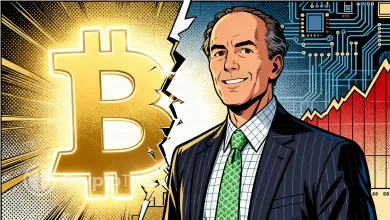France Urges EU to Give ESMA Full Control Over Crypto

- France seeks EU to grant ESMA the power to manage crypto rules across all member countries.
- Villeroy de Galhau says fragmented oversight could threaten Europe’s financial security.
- The Bank of France warns that dollar stablecoins may weaken the euro’s long-term value.
France has called on the European Union to grant its top markets regulator direct authority over major cryptocurrency firms. Bank of France Governor Francois Villeroy de Galhau said that the European Securities and Markets Authority (ESMA) should oversee the sector to ensure consistent enforcement across the bloc. He made the appeal Thursday during a speech addressing Europe’s rapidly expanding crypto industry.
Call for Centralized EU Oversight
Villeroy de Galhau said transferring oversight to ESMA would guarantee uniform supervision of crypto firms throughout the European Union. He argued that the move would help prevent regulatory loopholes that could threaten the bloc’s financial stability.
“Assigning direct regulatory powers to ESMA would ensure consistent rule enforcement throughout the EU,” he stated, according to remarks shared by the Bank of France. He warned that fragmented national oversight of crypto assets poses risks to the EU’s financial sovereignty.
The governor explained that firms could exploit differing national regulations, leading to regulatory arbitrage and weakening financial safeguards. A centralized model under ESMA, he said, would help close those gaps. Such a move would also create a safer environment for both businesses and consumers as the EU strengthens its Markets in Crypto-Assets (MiCA) framework.
Debate Over Stablecoin Regulation
The Bank of France’s concerns extend to the regulation of dollar-backed stablecoins under the MiCA framework. These tokens, which mirror the value of the U.S. dollar, rely on one-to-one reserves of traditional funds. Under MiCA’s multi-issuance model, licensed issuers can maintain partial reserves within one EU state while managing identical tokens abroad.
Villeroy de Galhau warned that this system could expose the EU to increased dependence on non-European currencies. “Such practices could weaken the euro and increase reliance on foreign entities,” he noted.
Circle, the issuer of the $76 billion USDC stablecoin, operates under this multi-issuance model after receiving an e-money license in France last year. The Bank of France, along with the Bank of Italy and the European Systemic Risk Board (ESRB), has expressed concerns that the practice may leave investors vulnerable to risks from insufficient reserves. These institutions have urged that multi-issuance be prohibited to strengthen stability within the EU’s crypto markets.
Related: France and Italy Push for ESMA Control, Malta Opposes Changes
A Push Toward Harmonized Regulation
The proposal from France for centralized supervision changes the game in deciding the future of the EU’s crypto. By pushing for the empowerment of ESMA, the French Central Bank wants to make sure that European companies do not take advantage of the different laws in the member states.
Such a unified system could help ease the burden of compliance. Additionally, it may increase investor trust as digital assets are poised to become a major player in cross-border payments.
On the other hand, some EU countries are reluctant to relinquish control over crypto regulation, aiming to address local market conditions. How the EU handles this will draw the line between innovation and financial stability. The debate on the matter of ESMA’s possible role and MiCA’s application will decide the future of Europe’s crypto regulation for years to come.





